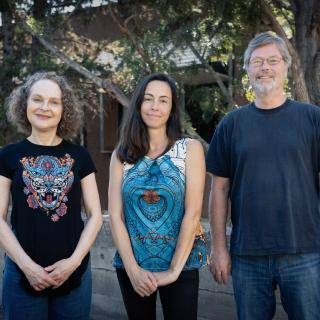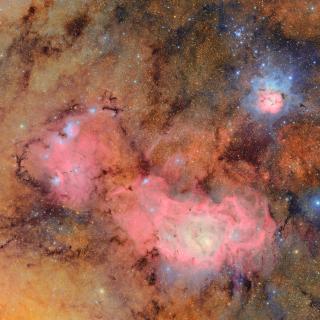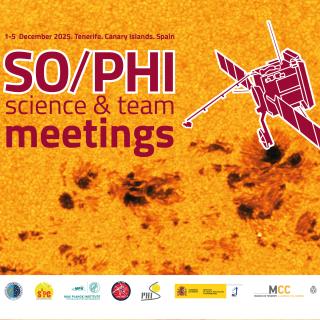It may interest you
-
 El Instituto de Astrofísica de Canarias (IAC) sigue afianzando su liderazgo investigador y de atracción de talento científico con el programa “ Investigadores Visitantes” de Fundación Occident. En este recién terminado año 2024, el programa cumple una década ininterrumpida de trabajo atrayendo a decenas de personas investigadoras cada año que han realizado estancias, de mínimo un mes y hasta tres meses, en el IAC. El programa permite que el personal investigador invitado comparta espacio y trabajo con miembros de los distintos grupos de investigación establecidos en el IAC, de forma que elAdvertised on
El Instituto de Astrofísica de Canarias (IAC) sigue afianzando su liderazgo investigador y de atracción de talento científico con el programa “ Investigadores Visitantes” de Fundación Occident. En este recién terminado año 2024, el programa cumple una década ininterrumpida de trabajo atrayendo a decenas de personas investigadoras cada año que han realizado estancias, de mínimo un mes y hasta tres meses, en el IAC. El programa permite que el personal investigador invitado comparta espacio y trabajo con miembros de los distintos grupos de investigación establecidos en el IAC, de forma que elAdvertised on -
 The Vera C. Rubin Observatory, located in Chile, today released its first images of the universe, known in astronomy as an instrument's “first light”. This event marks the beginning of a project that will revolutionise our understanding of the universe over the next decade. Jointly funded by the US National Science Foundation (NSF) and the US Department of Energy (DOE), the Instituto de Astrofísica de Canarias (IAC) is participating, as part of a consortium of Spanish institutions, in its scientific exploitation and contributing observation time from the Gran Telescopio Canarias (GTC orAdvertised on
The Vera C. Rubin Observatory, located in Chile, today released its first images of the universe, known in astronomy as an instrument's “first light”. This event marks the beginning of a project that will revolutionise our understanding of the universe over the next decade. Jointly funded by the US National Science Foundation (NSF) and the US Department of Energy (DOE), the Instituto de Astrofísica de Canarias (IAC) is participating, as part of a consortium of Spanish institutions, in its scientific exploitation and contributing observation time from the Gran Telescopio Canarias (GTC orAdvertised on -
 From today until 5 December 2025, the Instituto de Astrofísica de Canarias (IAC) is hosting the SO/PHI Science and Team Meetings, an international gathering focused on the scientific and technical advances of the Polarimetric and Helioseismic Imager (PHI) instrument aboard ESA's Solar Orbiter (SO) space mission. The development of PHI was co-led by the Spanish Space Solar Physics Consortium (S3PC), which also currently coordinates its scientific operation and exploitation. The IAC is part of this network. PHI is a high-precision solar observation instrument equipped with two telescopes—oneAdvertised on
From today until 5 December 2025, the Instituto de Astrofísica de Canarias (IAC) is hosting the SO/PHI Science and Team Meetings, an international gathering focused on the scientific and technical advances of the Polarimetric and Helioseismic Imager (PHI) instrument aboard ESA's Solar Orbiter (SO) space mission. The development of PHI was co-led by the Spanish Space Solar Physics Consortium (S3PC), which also currently coordinates its scientific operation and exploitation. The IAC is part of this network. PHI is a high-precision solar observation instrument equipped with two telescopes—oneAdvertised on